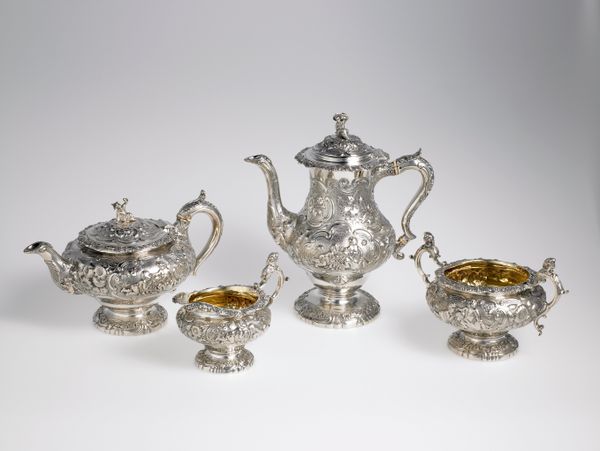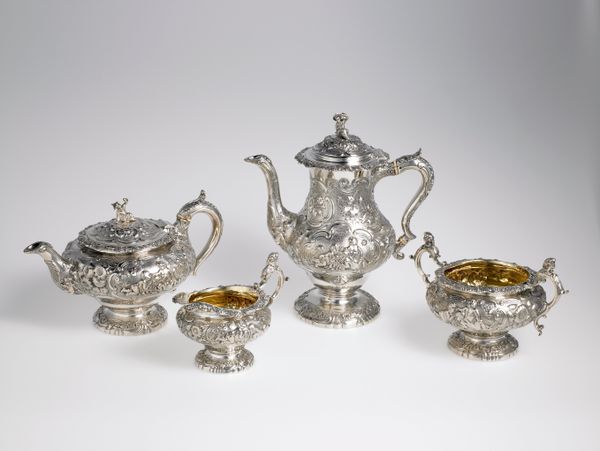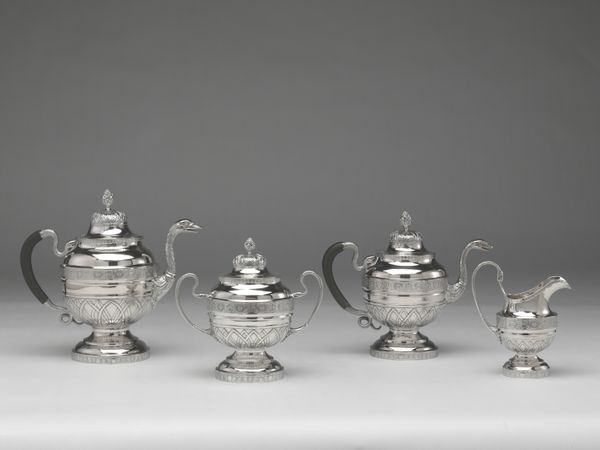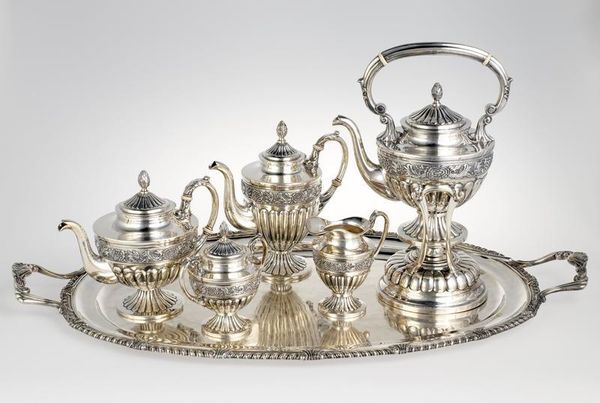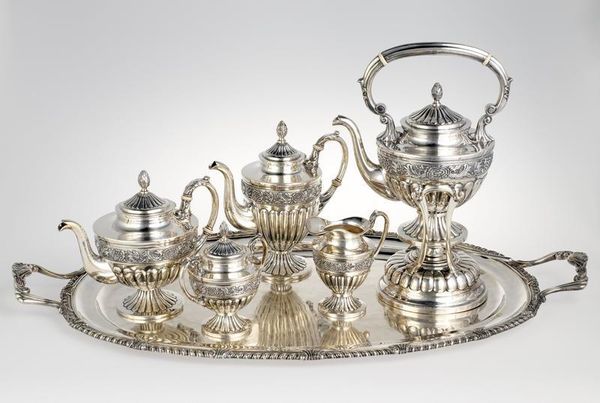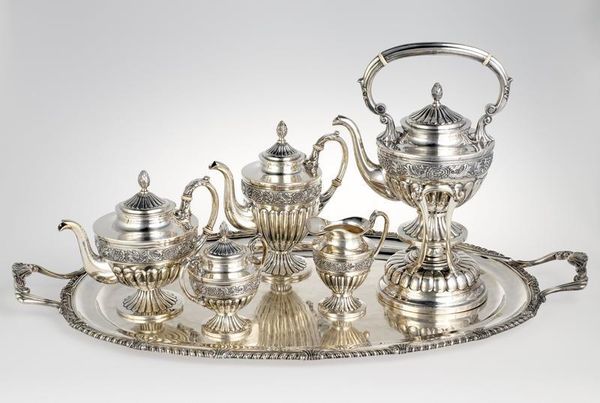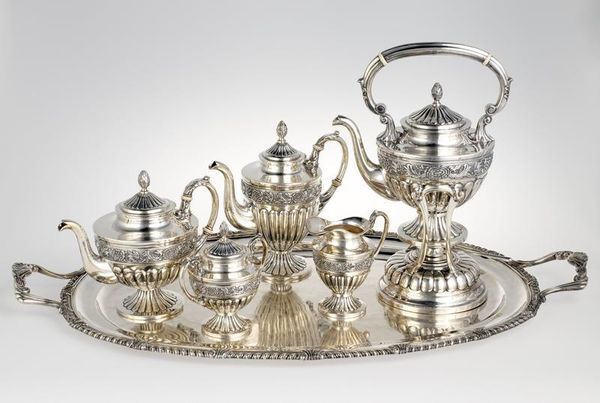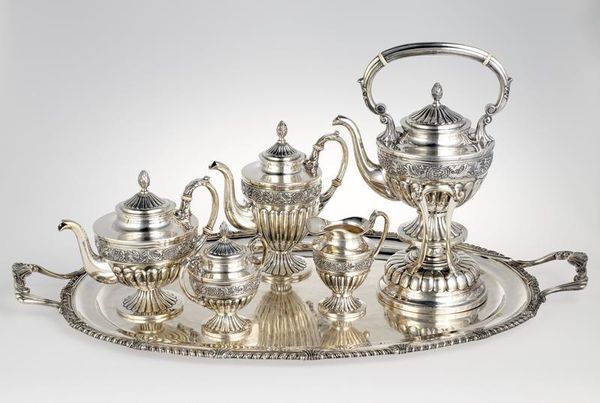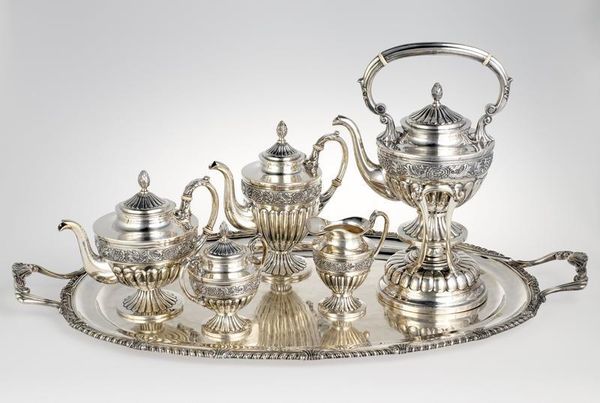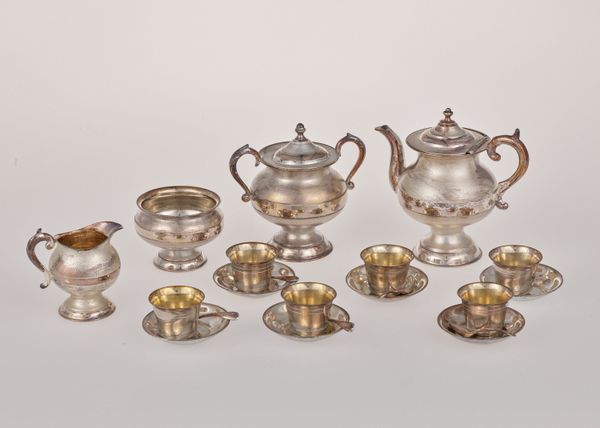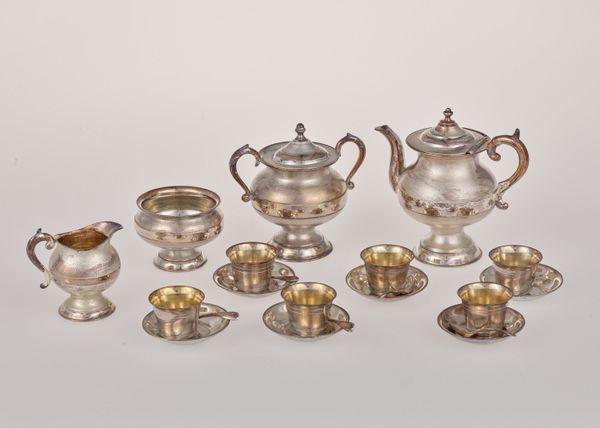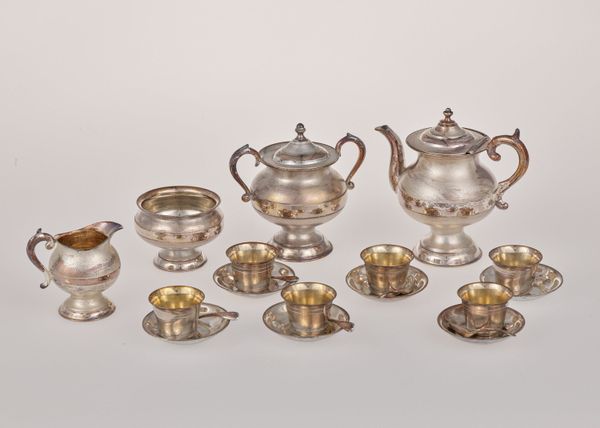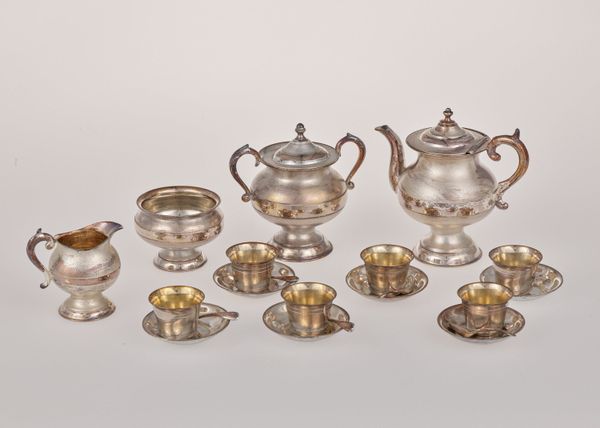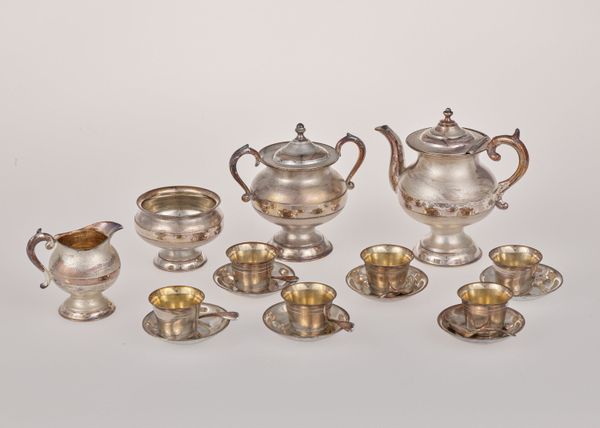
silver, metal
#
silver
#
metal
#
england
#
ceramic
#
decorative-art
Dimensions: 5 3/4 x 6 1/2 x 4 1/2in. (14.6 x 16.5 x 11.4cm)
Copyright: Public Domain
Editor: Here we have an object called "Creamer," dating back to 1823. It’s made of silver and the museum attributes it to Joseph Angell in England. I’m really struck by the sheer abundance of decoration and detail! What catches your eye in this piece? Curator: For me, the intrigue lies in understanding the material and social forces that shaped such an object. Look closely at the silver itself; its gleam speaks to the wealth and labor involved in its creation and, of course, its consumption. The craftsmanship suggests a highly skilled artisan – were they celebrated, or simply a cog in a production line? Editor: That's fascinating. I hadn’t really thought about the artisan. Does the form of the Creamer, all of those swirling patterns and decorative motifs, tell us anything about English society at that time? Curator: Absolutely. The "decorative-art" style is no accident. This isn't just about holding cream; it's about projecting status, reinforcing class distinctions through material possessions. This Creamer represents aspirations of gentility, disguising labor behind ornate detail, effectively hiding the cost in materials. We might even ask who profits from such elaborate material culture. Editor: So, you’re saying that an object like this embodies larger economic and social narratives? Curator: Precisely. Think about the mining of the silver, the trade routes it traveled, and the hands involved in every stage, from extraction to embellishment to ultimate ownership. The creamer isn't merely pretty. It is evidence of human enterprise and exploitation. Editor: I never thought of it that way. I was focused on the artistry itself. I now wonder, if those details could have been possible by hand? Curator: The techniques for working silver were evolving, and the maker may have been the designer or a craftsman that was directed by someone else. Looking more closely at that making of the objects can tell us a lot about the workshop they came from. Editor: This has completely changed my perspective. I'm now thinking less about aesthetics and more about the human element. Curator: And that is often where the real value and significance lies: unearthing the complex relationships woven into seemingly simple things.
Comments
No comments
Be the first to comment and join the conversation on the ultimate creative platform.
